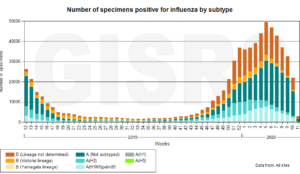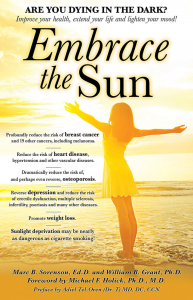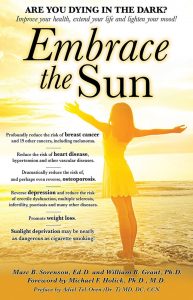Sunshine and Greenspace, by Marc Sorenson, EdD.
A part of my life, albeit I did not fully savor nor appreciate them.
Sunshine and greenspace should  be loved by all. Greenspace is an area of grass, trees, or other vegetation set apart for recreational or aesthetic purposes. In my case, there was not much winter participation outdoors and there was not much green. There was school study inside, snow and ice outside and not much greenery. Thus, thus colds and other irritating illnesses ruled my life. In summers, I spent my life on our ranch, working hay fields, chasing cattle bare-chested and doing other sundry chores. In addition, “green” was all around me in summer, since green fields of alfalfa corn and grass were ubiquitous. Consequently, my health was perfect! Of course, because of the Sunshine that blazed much of the day, there were other benefits. I was the recipient of nitric oxide, dopamine, circadian-rhythm entrainment, serotonin, endorphin, BDNF and vitamin D. King Kong could not have felt much better than I felt.
be loved by all. Greenspace is an area of grass, trees, or other vegetation set apart for recreational or aesthetic purposes. In my case, there was not much winter participation outdoors and there was not much green. There was school study inside, snow and ice outside and not much greenery. Thus, thus colds and other irritating illnesses ruled my life. In summers, I spent my life on our ranch, working hay fields, chasing cattle bare-chested and doing other sundry chores. In addition, “green” was all around me in summer, since green fields of alfalfa corn and grass were ubiquitous. Consequently, my health was perfect! Of course, because of the Sunshine that blazed much of the day, there were other benefits. I was the recipient of nitric oxide, dopamine, circadian-rhythm entrainment, serotonin, endorphin, BDNF and vitamin D. King Kong could not have felt much better than I felt.
It is apodictic that my good feelings and perfect physical rhythms were due to sunshine and greenspace. Yet, I believe I could have chosen to be outside more in the winter.
My parents raised me on the Utah/Nevada border. Hence, there was plenty of snow, but also plenty of sun in the winter. The nearby mountains and evergreen forests furnished a lot of green year-round. UVA light, lacking in the capacity to produce vitamin D, produces nitric oxide, serotonin and helps to reset the circadian rhythms. It might have enhanced my dark mood in winter. Nevertheless, due to my distaste of cold weather, I stayed inside to study and spent time in the gym.
It was not until much later that I learned the value of sunshine and greenspace.
Now it seems like there are a plethora of studies that praise the value of greenspace. I added the word “sunshine” in this paper because of my belief that majority of the benefits occur due to sunlight. The most eye opening and impressive of those studies is one called, The Health Benefits of the Great Outdoors. A Systematic Review and Meta-Analysis of Greenspace Exposure and Health Outcomes. It was a meta-analysis (highly respected and statistically believable). In addition, it used data from 103 observational and 40 interventional studies. It also measured 100 different health outcomes for people who participated (or did not) in greenspace areas and activities.
The remarkable results and health benefits of the great outdoors.
Here are the highly impressive and significant results of increased greenspace exposure.
Greenspaces associated with reduced risk of the following measurements:
- Salivary cortisol (the body’s main stress hormone).
- heart rate (-2.7 bpm)
- diastolic blood pressure (-1.97)
- HDL cholesterol (-.003)
- Low-frequency heart rate variability (-.06)
- pre-term birth (-13)
- type II diabetes (-.28)
- All-cause mortality (-.31)
- Small size for gestational age (-.19)
- Cardiovascular mortality (-.16)
In addition, there was an increased incidence of good self-reported health.
The researchers also reported, “The incidence of stroke, hypertension, dyslipidaemia, asthma, and coronary heart disease were reduced.” “For several non-pooled health outcomes, between 66.7% and 100% of studies showed health-denoting associations with increased greenspace exposure including neurological and cancer-related outcomes, and respiratory mortality.”
Save the Children!
In conclusion, one recent study on children shows that mental health problems, addiction, and neurotic or stress related disorders reduced between 40-50%. This same study showed that greenspace appeared to lower the risk of personality disorders, bipolar and mood disorders, and schizophrenia.
The message of course, is to get outdoors where it is green. Then, sunshine and greenspace can work together for wonderful health benefits.
For the research on the magnificent health affects of regular, non-burning sun exposure, visit sunlightinstitute.org and read the book Embrace the Sun, by Sorenson and Grant.
Death by Prescription Drugs. By Marc Sorenson, EdD.
 Are there better ways to heal? Could there be better ways to fight the coronavirus? (be sure to scroll down to the WHO flu graph.)
Are there better ways to heal? Could there be better ways to fight the coronavirus? (be sure to scroll down to the WHO flu graph.)
Death by prescription drugs is commonplace. Therefore, perhaps whole foods, avoidance of junk foods and plenty of sunlight are better alternatives. Thus, our approach here will be (1) to explain the health burden inflicted by prescription drugs. (2) To make nutrition suggestions and (3) finally propose exercise and sunlight as additional solutions.
Death and prescription drugs. The danger is real!
Since you probably realize that prescription drugs are ubiquitous, did you also realize just how dangerous they are? Would it get your attention to tell you that they are the fourth leading cause of death?
U.S. News published an interesting article, which makes us wonder if our pharmaceuticals do more harm that good. Are they healers of killers? Here are some of the most noteworthy facts the article presents:
Salient points from the article on Death and prescriptions.
- First, prescription medications are the fourth leading cause of death and a major cause of additional illnesses among Americans.
- A recent analysis estimates 128,000 Americans die each year due to taking medications as prescribed.
- In addition, adverse drug reactions from properly prescribed and used medicines result in 1.5 to 2.7 million hospitalizations each year.
- Sixty to 70 percent of us take at least one prescribed drug and many take an additional fistful of pills daily.
- A quote from Dr. Donald Light [apropos, no?], who analyzed the data: “By far the greatest number of [prescription drug-related] hospitalizations and deaths occur from drugs that are prescribed properly by physicians and taken as directed.” This comes from his paper entitled “Institutional Corruption of Pharmaceuticals and the Myth of Safe and Effective Drugs.”
- Another quote from Dr. Light’s paper: “About 2,460 people per week are estimated to die from drugs that were properly prescribed. And that’s based on detailed chart reviews of hospitalized patients.” [That of course, does not include the 1.5-2.7 hospitalizations that occur due to prescriptions.]
- The paper continues, “And though following a doctor’s orders and medication labeling instructions can reduce harms associated with taking prescription drugs, simply taking prescribed drugs as directed can expose a person to significant risk.”
Of course, properly prescribed drugs can save lives. Yet, do these drugs give us the best odds? They do not.
All of this begs a question. Does the brouhaha caused by coronavirus not pale in comparison to the millions of lives lost to drugs? Of course, I believe in finding a cure. Nevertheless, when this pandemic subsides, should we not first look at ways to stop death due to prescription? There are better ways to prevent and cure illnesses, and the people must be educated. Knowledge not disseminated is no better than no knowledge at all.
An illustration of a better way than prescription drugs to stop death by diseases—diabetes and other maladies
An example: 2/3 of diabetics who attended our resort were able to stop medications in 11.7 days because of nutrition. In addition, of course, they soaked up the sun. Also, 85% of those who stayed for four weeks were able to leave without the meds. The avoided meds included injected insulin and hypoglycemic drugs (Metformin, Glucotrol, etc.]. That seems like a better option than another drug to “prevent” death. Of course, people must be willing to make changes to heal themselves. Avoiding death is unlikely if a person would rather die than part with junk food. The people at our resort liberated themselves from drugs by making the right choices.
And what about death from other diseases?
Diabetes, of course, was only one of myriad diseases they left behind when they returned home from their sojourns with us. A few others were arthritis, headaches, muscle pain, heart disease, lupus, asthma and obesity. Even erectile dysfunction, mood disorders, endurance and eyesight improved. In addition, nothing we did involved drugs and supplements. Good food, exercise and sunlight were the “medicines” we used. As Hippocrates once stated, “Let Food be your medicine.” He should have added, “Let sunlight and exercise also be your medicine.”
You knew I would get to sunlight and death, did you not?
Another method to enhance human health, while reducing human death: Bring people back into the safe, non-burning sunlight. My latest book, Embrace the Sun, co-authored by Dr. William Grant, has some interesting analyses. There are, in the U.S., according to our calculations, approximately 1,684,677 yearly deaths caused by diseases associated with sun deprivation. That compares to 5125 deaths from diseases associated with high sun exposure, producing a ratio of approximately 328:1. Now you can live with those odds (no pun intended)! Do we really need all those drugs if we give up our killer nutrition and soak up some non-burning sunlight?
Here are some facts everyone should know about death-preventing effects of regular, non-burning sun exposure:
- Seventy-five percent of melanomas occur on areas of the body seldom exposed to sun.
- Women who sunbathe regularly have half the risk of death during a 20-year period compared to those who stay indoors.
- Multiple sclerosis (MS) is highest in areas of little sunlight, and virtually disappears in areas of year-round direct sunlight.
- A Spanish study shows that women who seek the sun have one-eleventh the hip-fracture risk as sun avoiders.
- Women who avoid the sun have 10-times the risk of breast cancer as those who embrace the sun.
- Sun exposure decreases heart disease risk.
- Sun exposure dramatically improves mood.
- Those persons who spend more than 15 minutes outdoors have only 1/50 the risk of Parkinson’s disease!
- For each death caused by diseases associated with sun exposure, there are 328 deaths caused by diseases associated with sun deprivation.
- Sun exposure increases the production of BDNF, essential to nerve function.
- Sun exposure can produce as much as 20,000 IU of vitamin D in 20 minutes of full-body sun exposure.
- In the U.S., vitamin D deficiency in children has increased by 83 times during a 14-year period. That is likely due to indoor living and sunscreen use.
- Sunlight also directly associates with reduced incidence and death from flu. In the next three months, we may determine if it also reduces the incidence of coronavirus. (Chart courtesy of WHO. Sent by Goran Olsson, Moscow, Russia.) Note the incredible increase of flu in seasons of sun deprivation.

Therefore, you see, good nutrition and sunlight can reduce the need for prescriptions and lighten one more death burden. Embrace the Sun.
The term holistic, as used for this discussion
 The term holistic (my definition) derives from the word “whole.” Hence, the term incorporates the idea that in nutrition, a whole food functions better than any of its parts. And, it means that when we treat diseases, we should treat the whole person. As an example of holistic nutrition, consuming whole-grains associates with better health than consuming refined grains.[1] Probably, the poor results associated with refined white bread are due to the removal of nutrients during processing. As a result, the bread is no longer holistic. Furthermore, we can state that it is no longer a whole food. Stay with this discussion. Holistic sun will be discussed to sum up.
The term holistic (my definition) derives from the word “whole.” Hence, the term incorporates the idea that in nutrition, a whole food functions better than any of its parts. And, it means that when we treat diseases, we should treat the whole person. As an example of holistic nutrition, consuming whole-grains associates with better health than consuming refined grains.[1] Probably, the poor results associated with refined white bread are due to the removal of nutrients during processing. As a result, the bread is no longer holistic. Furthermore, we can state that it is no longer a whole food. Stay with this discussion. Holistic sun will be discussed to sum up.
Other examples: holistic foods and non-holistic supplements
Especially relevant is that whole rice strongly associates with protection against disease, whereas refined rice increases risk.[2] Another example is the case in which a nutrient from a plant is extracted and encapsulated. Since the nutrient is subtracted from a food, neither the nutrient nor the food remains holistic. And, such food manipulation is based on observations that high levels of the nutrient in the body is associated with better health. Therefore, we might expect this encapsulated product to produce healthful outcomes. And, in some cases it does produce positive results. However, the product may also be totally ineffective or counterproductive.
Holistic vegetables vs non-holistic beta carotene and vitamin E
An example of this is supplementation with beta carotene. Beta carotene is a nutrient found in carrots and other orange and yellow vegetables. Since people who consume large quantities of these vegetables seem to be healthier, a question emerges. Could concentrated beta carotene produce a health miracle?[3]
Testing the possibility: Can supplements beat holistic vegetables?
So to test that possibility, researchers gave one group of cancer patients beta carotene pills (not holistic). They gave other patients a placebo. Opposite from the researchers’ expectations, the cancer increased with beta carotene supplementation.[4] Consequently, these adverse results led to the discontinuation of the research. Furthermore, similar results have been shown with vitamin E supplementation.[5] While beta carotene and vitamin E are wonderful, they must work as part of the holistic team.
What about the health of those who eat holistic foods containing beta carotene?
And what about those who have high beta carotene levels due to a high intake of colorful vegetables? It is most noteworthy to again mention that high carotene levels still predict better health. These vegetables contain innumerable, healthful chemical compounds, only one of which is beta carotene. Hence, when beta carotene is part of the magnificent, holistic orchestra of nutrients, it helps to produce a beautiful health concert. In conclusion, whole foods—or holistic foods—will be better for human health than a single, isolated nutrient. And remember this. Junk foods are never holistic.
Is the sun holistic, or do we need only to take a vitamin D pill?
 So, can the sun be holistic? Yes! First of all, the idea of a holistic sun was the reason I wrote my latest book, Embrace the Sun. I had noted numerous studies where vitamin D, the major photoproduct of sun exposure, sometimes failed as a supplement. In other cases it seemed to work quite well. Yet, when sun exposure was tested for the expected result, that result was almost invariably positive. At this point, I must make it clear that there are many studies showing that vitamin D supplementation can produce terrific, healthful outcomes. This is especially true when vitamin D deficiency is present. But since sun exposure produces many other healthful photoproducts, why should we settle for just one? Beyond vitamin D, here are few additional photoproducts produced by sun exposure.
So, can the sun be holistic? Yes! First of all, the idea of a holistic sun was the reason I wrote my latest book, Embrace the Sun. I had noted numerous studies where vitamin D, the major photoproduct of sun exposure, sometimes failed as a supplement. In other cases it seemed to work quite well. Yet, when sun exposure was tested for the expected result, that result was almost invariably positive. At this point, I must make it clear that there are many studies showing that vitamin D supplementation can produce terrific, healthful outcomes. This is especially true when vitamin D deficiency is present. But since sun exposure produces many other healthful photoproducts, why should we settle for just one? Beyond vitamin D, here are few additional photoproducts produced by sun exposure.
Photoproducts that are part of the holistic sun’s health arsenal:
- Sun exposure increases nitric oxide production, which immediately lowers blood pressure and leads to a decrease in heart disease risk.[6] Taking a D pill does not produce this result.
- Sun exposure dramatically improves mood through the production of serotonin.[7] This result is nearly immediate and not triggered by vitamin D.
- Sun exposure increases the production of BDNF, part of a cascade of proteins promoting growth of neurons and preventing nerve death.[8] This result is not triggered by vitamin D. BDNF is a major player on the holistic sun’s team.
More holistic photoproducts:
- Sun exposure increases the production of endorphin, another mood enhancer.[9] This is a non-vitamin D response.
- UVB light from sun, sunlamps or sunbeds directly helps heal psoriasis.[10] This is not a vitamin D response.
- Sun exposure also leads to the production of several additional natural chemicals that enhance human health. Here are a few: Alpha melanocyte-stimulating hormone, Calcitonin gene-related peptide and Neuropeptide substance P. A full discussion of them here would become too cumbersome for this blog.
Summary: the importance of holistic sun
So, suffice it to say that the holistic sun has many benefits beyond the production of vitamin D. And remember, sunbeds and sunlamps can furnish the holistic effects of sun exposure when sunlight is not available. These include the production vitamin D, which, when combined with the other photoproducts, enhances health to a far greater extent than vitamin D alone. Hence, we might say that the photoproducts of sun exposure are synergistic—the holistic sun being far more effective than any of its individual parts. When major players are taken away from the orchestra, the concert is not as good. Don’t let that happen with your holistic sun. Be sure that all of the sun’s remarkable photoproducts are working for you, including vitamin D.
In conclusion, Embrace the Holistic Sun safely and reap the health benefits. Don’t burn and don’t use sunscreens, which take away one of the major players in your orchestra: vitamin D. Have a sunny week!
[1] Tayyem RF, Bawadi HA, Shehadah I, Agraib LM, Al-Awwad NJ, Heath DD, Bani-Hani KE. Consumption of Whole Grains, Refined Cereals, and Legumes and Its Association With Colorectal Cancer Among Jordanians. Integr Cancer Ther. 2016 Sep;15(3):318-25.
[2] Musa-Veloso K, Poon T, Harkness LS, O’Shea M, Chu Y. The effects of whole-grain compared with refined wheat, rice, and rye on the postprandial blood glucose response: a systematic review and meta-analysis of randomized controlled trials. Am J Clin Nutr. 2018 Oct 1;108(4):759-774
[3] Alpha-Tocopherol, Beta Carotene Cancer Prevention Study Group. The effect of vitamin E and beta carotene on the incidence of lung cancer and other cancers in male smokers. N Engl J Med. 1994 Apr 14;330(15):1029-35.
[4] Tanvetyanon T, Bepler G. Beta-carotene in multivitamins and the possible risk of lung cancer among smokers versus former smokers: a meta-analysis and evaluation of national brands. Cancer. 2008 Jul 1;113(1):150-7
[5] Alpha-Tocopherol, Beta Carotene Cancer Prevention Study Group. The effect of vitamin E and beta carotene on the incidence of lung cancer and other cancers in male smokers. N Engl J Med. 1994 Apr 14;330(15):1029-35.
[6] Weller R. The health benefits of UV radiation exposure through vitamin D production or non-vitamin D Pathways. Blood pressure and cardiovascular disease. Photochem. Photobiol. Sci. 2016.
[7] Lambert GW, Reid C, Kaye DM, Jennings GL, Esler MD. Effect of sun and season on serotonin turnover in the brain. Lancet. 2002 Dec 7;360(9348):1840-2.
[8] http://scicurious.scientopia.org/2010/12/13/bdnf-and-depression/
[9] Aubert PM, Seibyl JP, Price JL, Harris TS, Filbey FM, Jacobe H, Devous MD Sr Adinoff B. Dopamine efflux in response to ultraviolet radiation in addicted sunbed users. Psychiatry Res. 2016 30;251:7-14.
[10] National Psoriasis Foundation web site Oct. 2005.
By Marc Sorenson, EdD, Sunlight Institute…
We all know that high sunlight exposure in adults leads to higher vitamin D levels. However, a most interesting piece of research also shows that your birth month has a considerable influence on vitamin D levels. In an Italian study, it was found that those who were born in winter, rather than spring and summer, were 11% more likely to develop vitamin D deficiency later in life.[i] This is an important finding, since many diseases are related in one way or another to season of birth. For example, a greater risk of obesity risk is observed in Canadians born in winter. Nevertheless, other factors such as inactivity are more important than season of birth.[ii]
This is another study that ties sunlight to vitamin D. But the question may still be asked: Is the relationship of birth seasonality to disease due to vitamin D or sunlight, or both? Whatever the answer, sunlight is the factor that makes vitamin D, so safely soak up the sun whenever you have the opportunity, and when it is too cold or overcast, safely use a sun lamp or tanning bed.
[i] Lippi G, Bonelli P, Buonocore R, Aloe R. Birth season and vitamin D concentration in adulthood. Ann Transl Med. 2015 Sep;3(16):231.
[ii] Wattie N1, Ardern CI, Baker J. Season of birth and prevalence of overweight and obesity in Canada. Early Hum Dev. 2008 Aug;84(8):539-47.
By Marc Sorenson, EdD, Sunlight Institute
Go ahead and soak up some sun! So says Dr. Holick.
It is great to have Dr. Michael Holick appearing in news articles occasionally, because he helps to stop the pervasive lies that frighten the public from partaking of life-saving sun exposure. A recent article appearing in the Washington Post, and written by Dr. Holick, makes some good points that all of us should have at our fingertips when being confronted by the anti-sun militants:
- The American Academy of Dermatology recommends never exposing bare skin to the sun, or even on a cloudy day, without sunscreen. [How about that for insanity!]
- The FDA calls ultraviolet radiation a carcinogen. [ridiculous]
- These messages cause widespread paranoia
- SPF 30 sunscreens reduce vitamin D production by 97%.
- A lack of vitamin D is associated with increased risk for Type 1 and 2 diabetes, multiple sclerosis, rheumatoid arthritis, Crohn’s disease, cardiovascular disease, stroke, depression, Alzheimer’s disease, schizophrenia, colon and breast cancer, influenza and tuberculosis.
Much of the rest of the article concentrates on putting the lie to the nonsense about hiding ourselves from the sun, as he talks about how vital vitamin D is for cancer, diabetes and other diseases. He then discusses the best way to get sunlight exposure. This is a must read!
This is the link to the article: https://www.washingtonpost.com/opinions/go-ahead-soak-up-some-sun/2015/07/24/00ea8a84-3189-11e5-97ae-30a30cca95d7_story.html.
Marc Sorenson, EdD
IBD consists of two primary diseases, ulcerative colitis (UC) and Crohn’s disease (CD). UC is a chronic inflammatory condition characterized by relapsing and remitting episodes of inflammation limited to the mucosal layer of the colon. [1] Crohn’s however, can involve any part of the gastrointestinal tract from the mouth to the anus but most commonly affects the small intestine or the colon or both.[2] The most common symptoms of IBD are abdominal pain, weight loss, fever, rectal bleeding, skin and eye irritations and diarrhea.
In a 12-year year investigation of hundreds of thousands of IBD patients, measuring both UC and CD, hospitalizations and prolonged hospitalizations for both diseases were higher among those who had low sunlight exposure compared to those with very high sunlight exposure.[3] The same relationship was shown between sunlight, bowel surgeries and deaths; more surgeries were needed for those patients who experienced the lowest sunlight exposure compared to those who had the highest sunlight exposure, and more deaths occurred among those with low exposure.
An interesting side note to this investigation was that a large number of non-IBD patients were also analyzed for sunlight exposure amounts. As with the IBD patients, low sunlight exposure was associated with prolonged hospitalizations and more deaths when compared with high exposure.
French research has shown that high residential sun exposure is associated with a low risk of CD,[4] but not UC. Women who were in the highest third of sunlight exposure had only half the risk of CD compared to those in the lowest third, but UC was increased 21% by high sunlight exposure. This study was the only one I have seen—other than studies on non-melanoma skin cancer—that indicated a positive association of sunlight exposure with disease risk. None of the other studies mentioned here showed that relationship with UC. Another interesting side note to this research was that vitamin D intake was not associated with decreased risk of CD.
It has also been shown that in both Europe and the US, there is a north-south gradient for IBD,[5] meaning that the risk of developing IBD is significantly lower for the southern latitudes (where sunlight exposure is greater). And finally, another French study has demonstrated that low sunlight exposure is associated with an increased incidence of Crohn’s disease.[6]
So for a healthy gut, sunlight exposure plays a vital role.
[1] Mark A Peppercorn, Adam S Cheifetz, Paul Rutgeerts, Shilpa Grover. Definition, epidemiology, and risk factors in inflammatory bowel disease. Uptodate http://www.uptodate.com/contents/definition-epidemiology-and-risk-factors-in-inflammatory-bowel-disease. Accessed July 1, 2015.
[2] Web MD http://www.webmd.com/ibd-crohns-disease/crohns-disease/inflammatory-bowel-syndrome. Accessed July 1, 2015.
[3] Limketkai BN1, Bayless TM, Brant SR, Hutfless SM. Lower regional and temporal ultraviolet exposure is associated with increased rates and severity of inflammatory bowel disease hospitalization. Aliment Pharmacol Ther. 2014 Sep;40(5):508-17.
[4] Jantchou P1, Clavel-Chapelon F, Racine A, Kvaskoff M, Carbonnel F, Boutron-Ruault MC. High residential sun exposure is associated with a low risk of incident Crohn’s disease in the prospective E3N cohort. Inflamm Bowel Dis. 2014 Jan;20(1):75-81.
[5] Schultz M1, Butt AG. Is the north to south gradient in inflammatory bowel disease a global phenomenon? Expert Rev Gastroenterol Hepatol. 2012 Aug;6(4):445-7.
[6] Nerich V1, Jantchou P, Boutron-Ruault MC, Monnet E, Weill A, Vanbockstael V, Auleley GR, Balaire C, Dubost P, Rican S, Allemand H, Carbonnel F. Low exposure to sunlight is a risk factor for Crohn’s disease. Aliment Pharmacol Ther. 2011 Apr;33(8):940-5.



